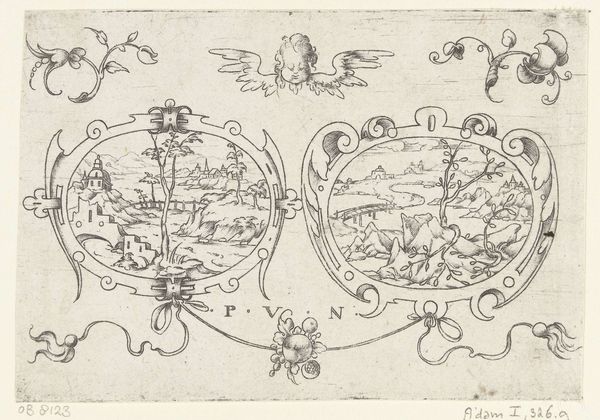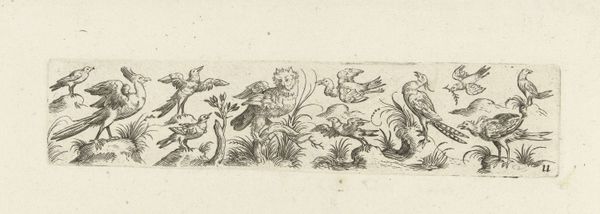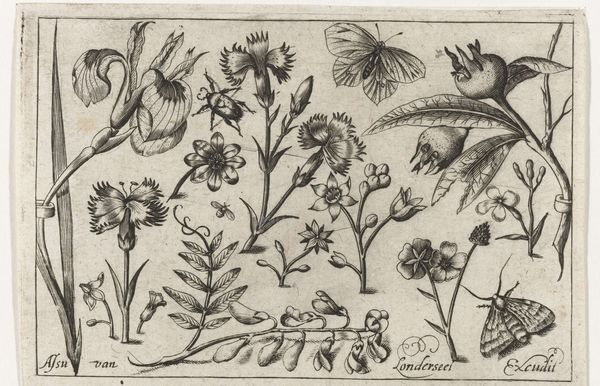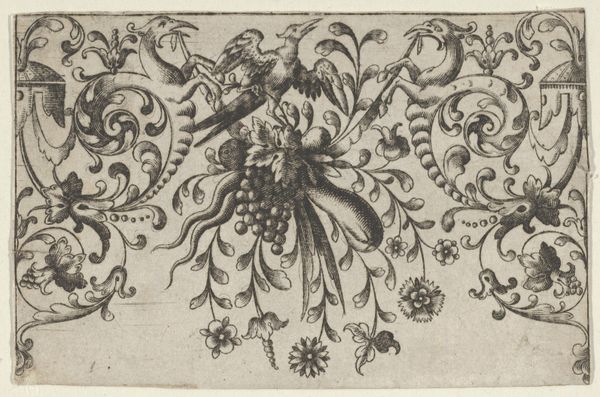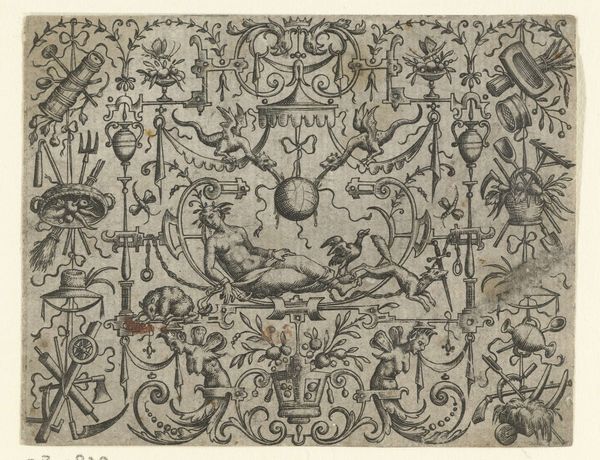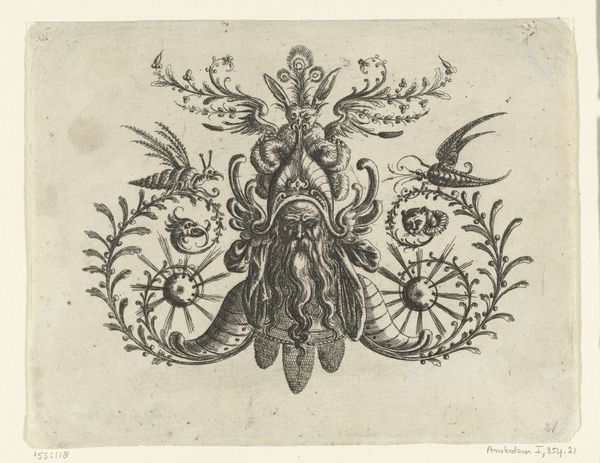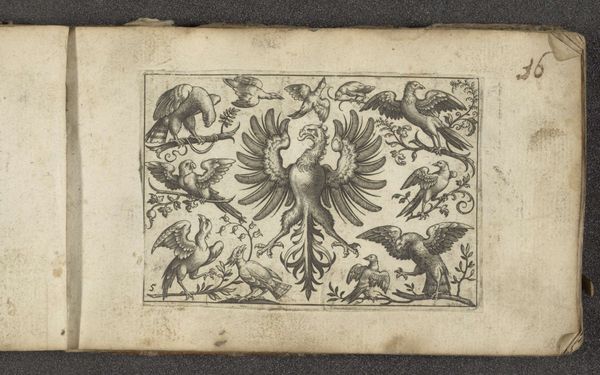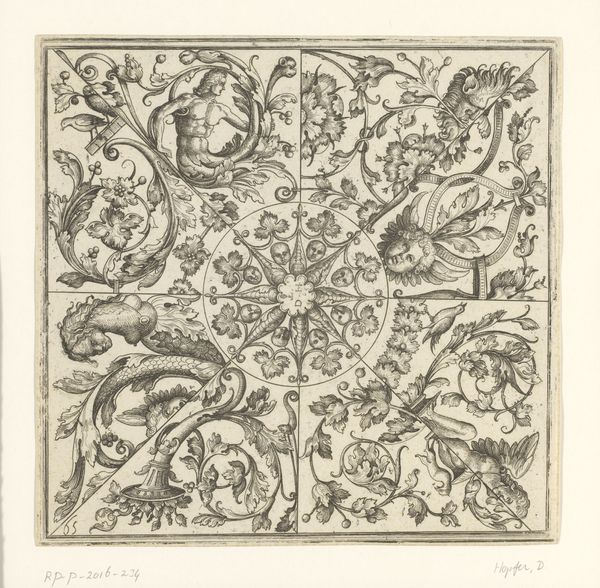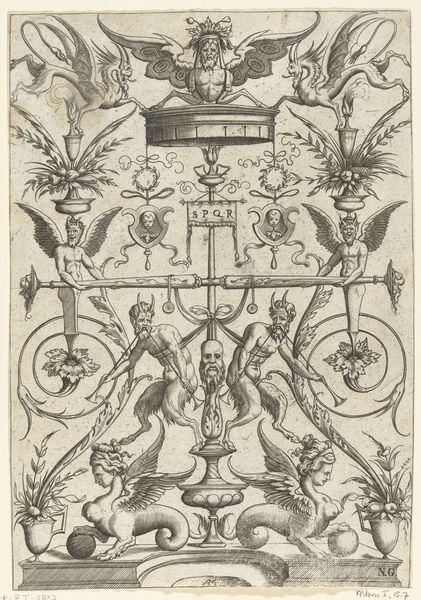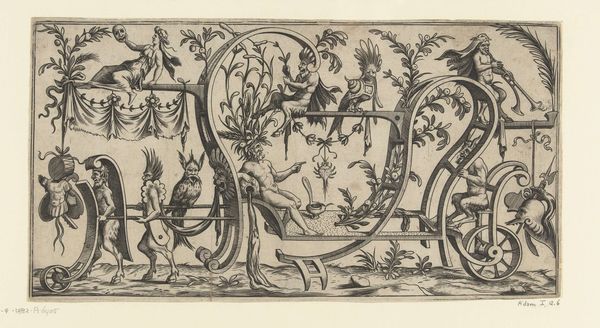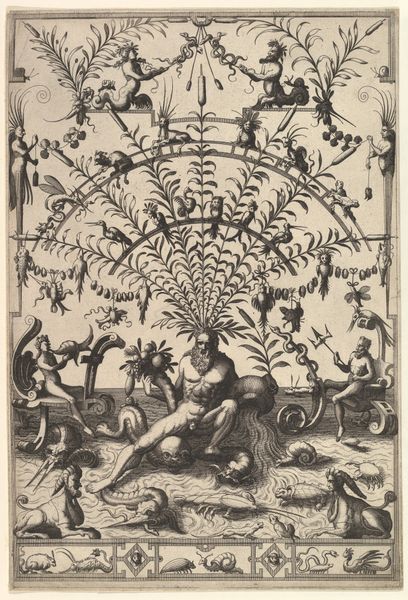
drawing, print, ink, engraving
#
drawing
#
pen drawing
# print
#
pen illustration
#
pen sketch
#
figuration
#
ink
#
geometric
#
line
#
history-painting
#
engraving
Dimensions: height 43 mm, width 61 mm
Copyright: Rijks Museum: Open Domain
Editor: This is "Ovaal met adelaar omringd door leeuwen en fantasiewezens," which translates to "Oval with eagle surrounded by lions and mythical creatures." It's an ink and engraving print by Martin Pleginck from 1594. It's incredibly detailed. What immediately strikes me is the heraldic imagery. How do you interpret its symbolism in its historical context? Curator: It's fascinating how Pleginck combines these power symbols within a constrained, oval shape. We see the eagle, of course, a common symbol of imperial authority and divine power. The lions, often associated with courage and nobility, are interspersed with creatures that blend animal forms. The repetition emphasizes hierarchy, which was a vital message to disseminate to the public. These symbols served as visual language understood by the elite. It reminds me, what do you make of the arrangement; why an oval? Editor: I see your point. The oval framing feels deliberate. Perhaps it suggests a mirror or an emblem meant to be worn. Its function as an easily reproducible print may mean accessibility and widespread dissemination. I wonder if this emblem alludes to a specific political alliance or the aspirations of a particular noble family? Curator: Exactly. It might be connected to the social networks of Pleginck's patrons. Think about the political climate of the late 16th century—the Dutch Revolt was underway. Visual symbols were integral tools of persuasion and claims to power. How do you think this print might have functioned in shaping public opinion? Editor: Maybe it solidified identities. Perhaps, it was meant to foster loyalty amidst political instability, by presenting a unified front through familiar, respected imagery? This makes me rethink its role; more than simple decoration, it's political propaganda. Curator: Precisely. Considering prints were relatively accessible, its symbolism may reach wider segments of society than solely aristocratic circles, which shows us that these images do important socio-political work. The layers of meaning inherent in something that may seem straightforward, truly are endless. Editor: I see how studying the context transforms our understanding. What started as a visually appealing heraldic image becomes an intriguing insight into 16th-century power dynamics.
Comments
No comments
Be the first to comment and join the conversation on the ultimate creative platform.
